

Guide to DevOps And CI/CD: What’s Best For Your Workflow?






The debate between DevOps and CI/CD has become intense lately as both methods have gained popularity and reshaped how we approach software development. DevOps aims to speed up and improve software development and deployment by breaking down barriers between teams and making workflows smoother. Research by Markets and Markets predicts that the DevOps market will grow to $25.5 billion by 2028, with an annual growth rate of 19.7% from 2024 to 2028.
In contrast, CI/CD focuses on continuous integration, testing, and deployment of code changes using specific practices and tools. According to reports from Gartner, organizations that implement CI/CD automation experience up to 40% faster time-to-market than those that do not. This highlights the effectiveness of CI/CD in accelerating software delivery processes.
DevOps and CI/CD speed up and improve software development, but they do it differently. DevOps improves teamwork and communication between developers and operations, while CI/CD focuses on automating tasks and finding problems early.
In this blog, we’ll explore what CI/CD and DevOps are, how they differ, and how using both together can lead to better software development outcomes.
CI/CD stands for Continuous Integration and Continuous Deployment. It uses practices and tools to automate software development, testing, and deployment. The main goal of CI/CD is to deploy software quickly and reliably by finding and fixing bugs early.
Continuous Integration (CI) means regularly adding new code to a shared place. This helps developers find and fix bugs early so new code doesn’t break what’s already working.
Continuous Deployment (CD) automatically releases code changes to production after they pass all tests. This allows companies to quickly and safely add new features and fixes using automated tools.
CI is a software development practice in which developers frequently merge their code changes into a shared repository. By combining code, CI aims to spot and fix problems early, making development smoother and faster. By regularly adding new code, developers can quickly find and fix bugs before they become more significant.
Automated testing is crucial in CI. It ensures that new code changes don’t break what’s already working. Every time code is added, automated tests run to catch errors. This keeps software quality high and speeds up development by providing quick feedback. Automated testing allows developers to focus on coding instead of manually checking for problems.
By finding issues early, CI with automated testing helps teams deliver reliable software faster and more efficiently, improving productivity and quality while lowering the risk of bigger problems later.
Continuous Deployment (CD) automatically releases code changes to users after they pass all tests. This means new updates go live quickly and reliably without manual work.
CD uses automated tools and scripts to manage deployments. These tools ensure code changes are released safely and consistently, reducing human errors and speeding up the process. Scripts handle tasks like setting up environments, running tests, and pushing updates.
The main goal of CD is to update software quickly and safely. It allows teams to release new features and fixes more often with less risk, improving speed and quality by ensuring only well-tested code is used.
Using Continuous Integration and Continuous Deployment (CI/CD) benefits organizations. It smoothens the development process and automates important tasks, changing how software is delivered. Here are the main benefits of CI/CD:
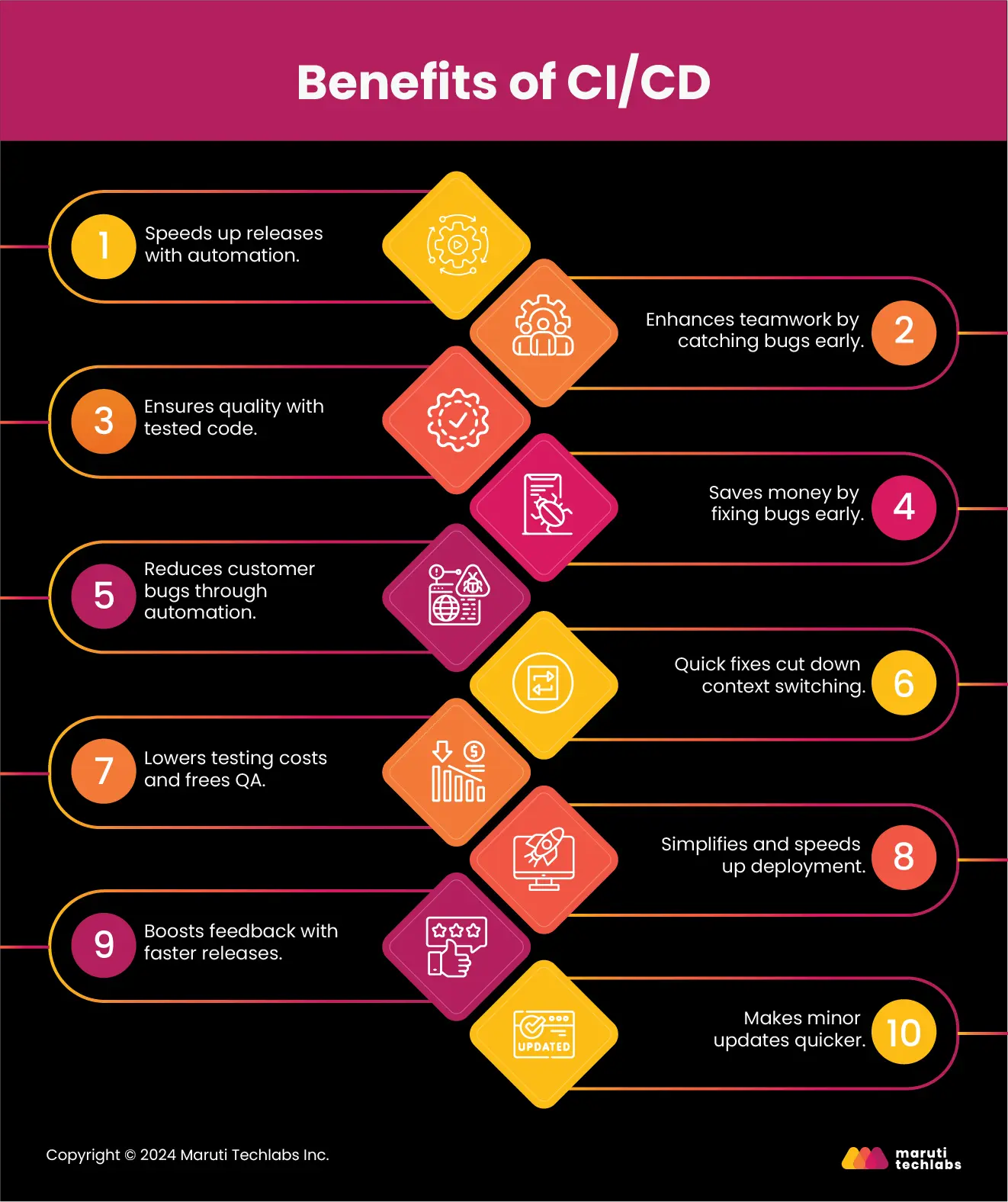
CI/CD smooths development, testing, and deployment, making software delivery quicker, more reliable, and cost-effective. It improves teamwork, reduces bugs, and simplifies the release process, so updates happen more often and run more smoothly.
Setting up a CI/CD pipeline with tools like GitHub and Jenkins is straightforward. You must follow these steps: manage your code versions, run automated tests, combine code changes, deploy your software, and monitor it. Here’s how to get started:
Use GitHub to manage your code. When developers make changes, they create a Pull Request (PR), which starts the CI/CD process.
Set up Jenkins to run tests automatically whenever new code is added. Log in, create a new pipeline, and add your test steps. This helps catch bugs early.
Once the code passes the tests, Jenkins automatically merges it into the main branch.
Jenkins then deploys the code to production using automated scripts, ensuring it’s released consistently and reliably.
Jenkins lets you monitor deployments. Check the 'Stage View' and console output for any issues. Plugins like 'Pipeline Timeline' show each step in the process.
This setup helps your team release updates quickly and reliably. It improves software quality, reduces problems, speeds up delivery, and makes teamwork more accessible, all while cutting costs by fixing issues early.
To understand Continuous Integration (CI) and Continuous Delivery (CD), here’s a comparison:
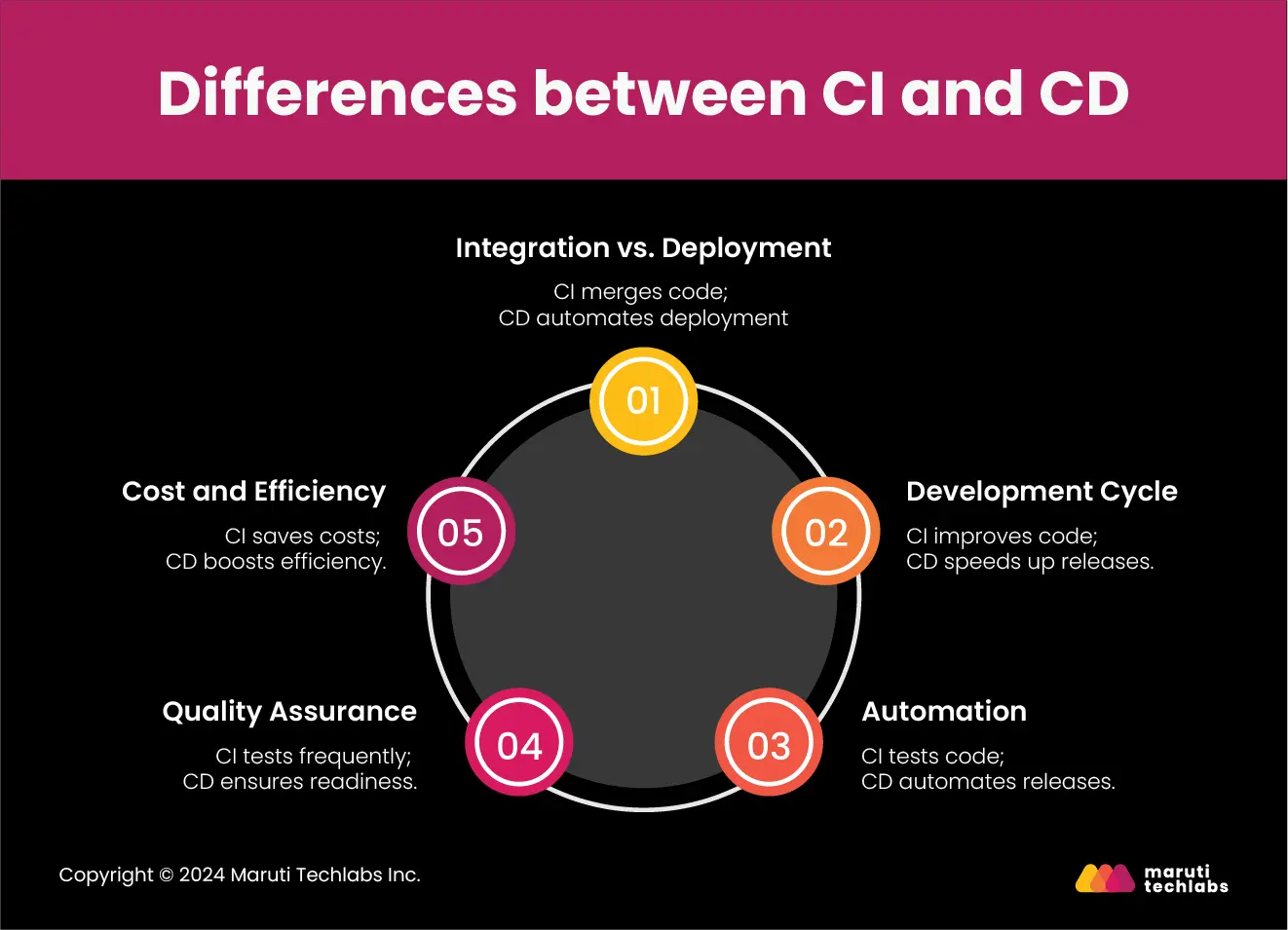
CI focuses on regularly merging code changes into a shared project. This helps find and fix bugs early. On the other hand, CD automates deploying code to production, making the release process faster and more reliable.
CI helps improve development by catching issues early when code is integrated, preventing costly fixes later. CD speeds up the release process by automatically deploying tested code so updates and new features reach users faster.
CI automates testing code before it’s added to the main project, ensuring no new errors are introduced. The CD takes it further by automating the whole release process, from testing to deployment, making updates smoother and reducing manual work.
CI ensures code quality by regularly integrating and testing changes, which helps catch defects early. CD ensures all changes are thoroughly tested and ready for deployment, maintaining high-quality standards through automation.
CI reduces costs by catching bugs early, which prevents the need for expensive fixes later. CD enhances efficiency by automating the release process, allowing teams to deliver updates and new features quickly and reliably.
While CI focuses on integrating and testing code to ensure stability, CD automates and speeds up the deployment of changes to production, enhancing the overall software development process.
A CI/CD pipeline uses multiple tools to automate different stages of software development, from code integration to deployment. Some tools commonly used in a CI/CD pipeline are:
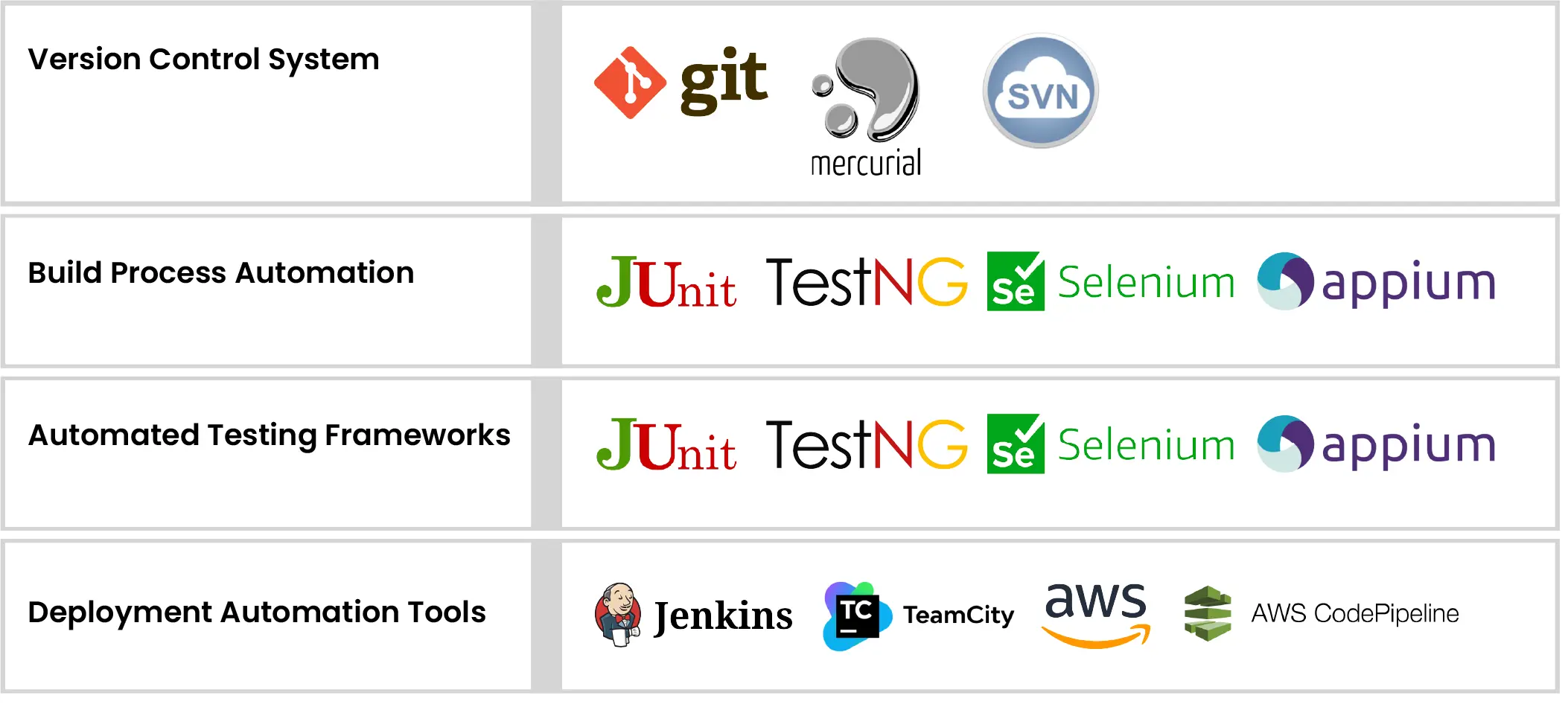
Git, Mercurial, and SVN tools automate building and testing code. They automatically run these tasks whenever code changes are made.
Tools like JUnit, TestNG, Selenium, and Appium automate the testing process. They run tests on code updates to make sure new changes don’t break existing features.
Tools like JUnit, TestNG, Selenium, and Appium automate the testing process. They run tests on code updates to make sure new changes don’t break existing features.
Deployment automation tools simplify putting code into production. They help make sure deployments are consistent and reduce the chance of errors.
These tools work together to ensure that deployments are consistent and reliable, reducing the risk of errors.
DevOps is a software development approach focusing on collaboration between development and operations teams. It promotes shared responsibility for the entire software lifecycle, from development to deployment, enhancing the speed and quality of software delivery.
Fundamental principles of DevOps include:
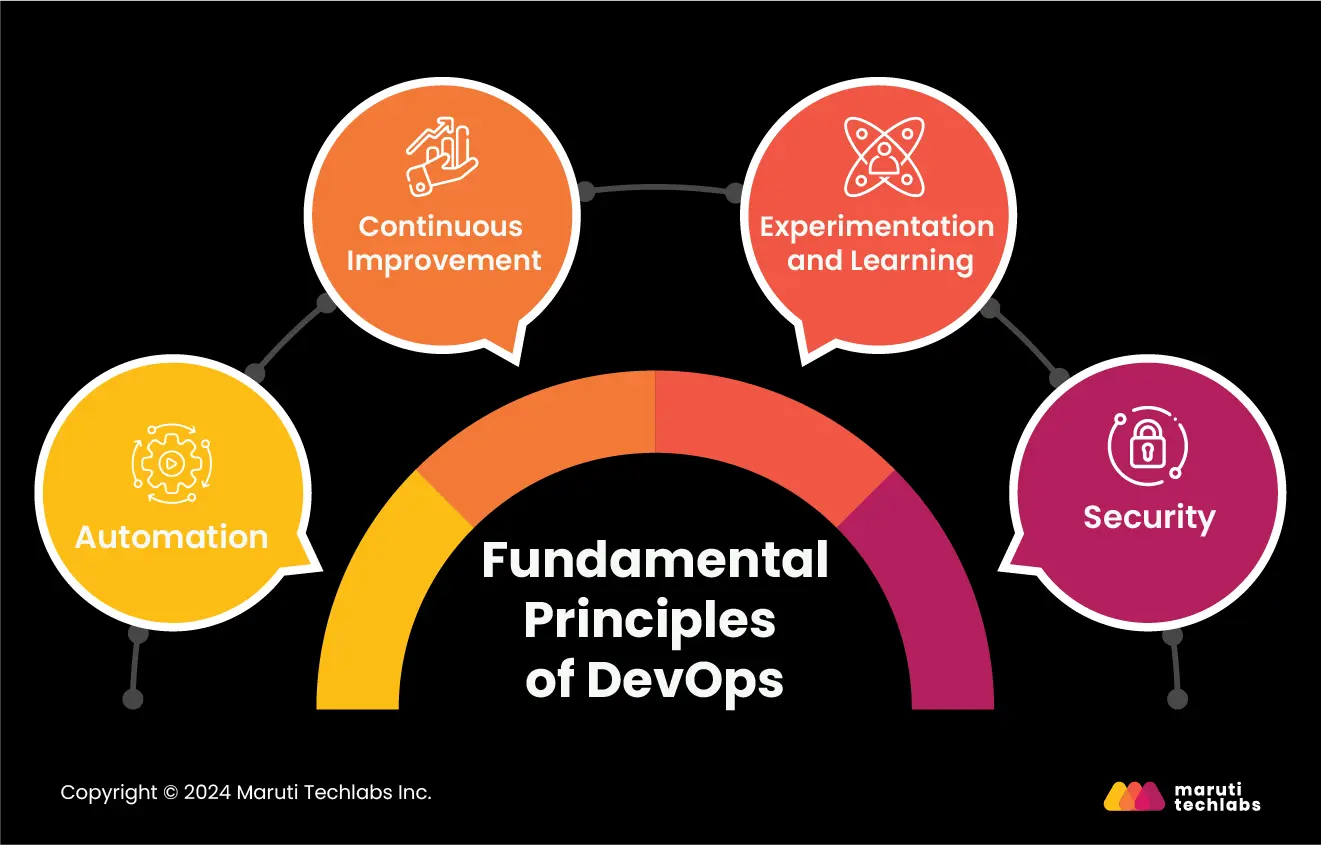
By automating routine tasks like testing, deployment, and monitoring, teams can reduce errors and work more efficiently. Tools for configuration management and containerization are often used to manage infrastructure.
DevOps teams use data and feedback to improve their software and processes. They track how things are running and quickly make changes based on feedback, often using agile methodologies.
DevOps encourages using new technologies like cloud computing and artificial intelligence to improve workflows. Teams are encouraged to experiment and adopt innovative solutions.
DevOps teams are responsible for the security of the software, implementing security testing, incident response plans, and using tools to protect against threats.
This integrated approach ensures better collaboration, faster releases, and higher-quality software.
Adopting DevOps offers several critical benefits for software teams:
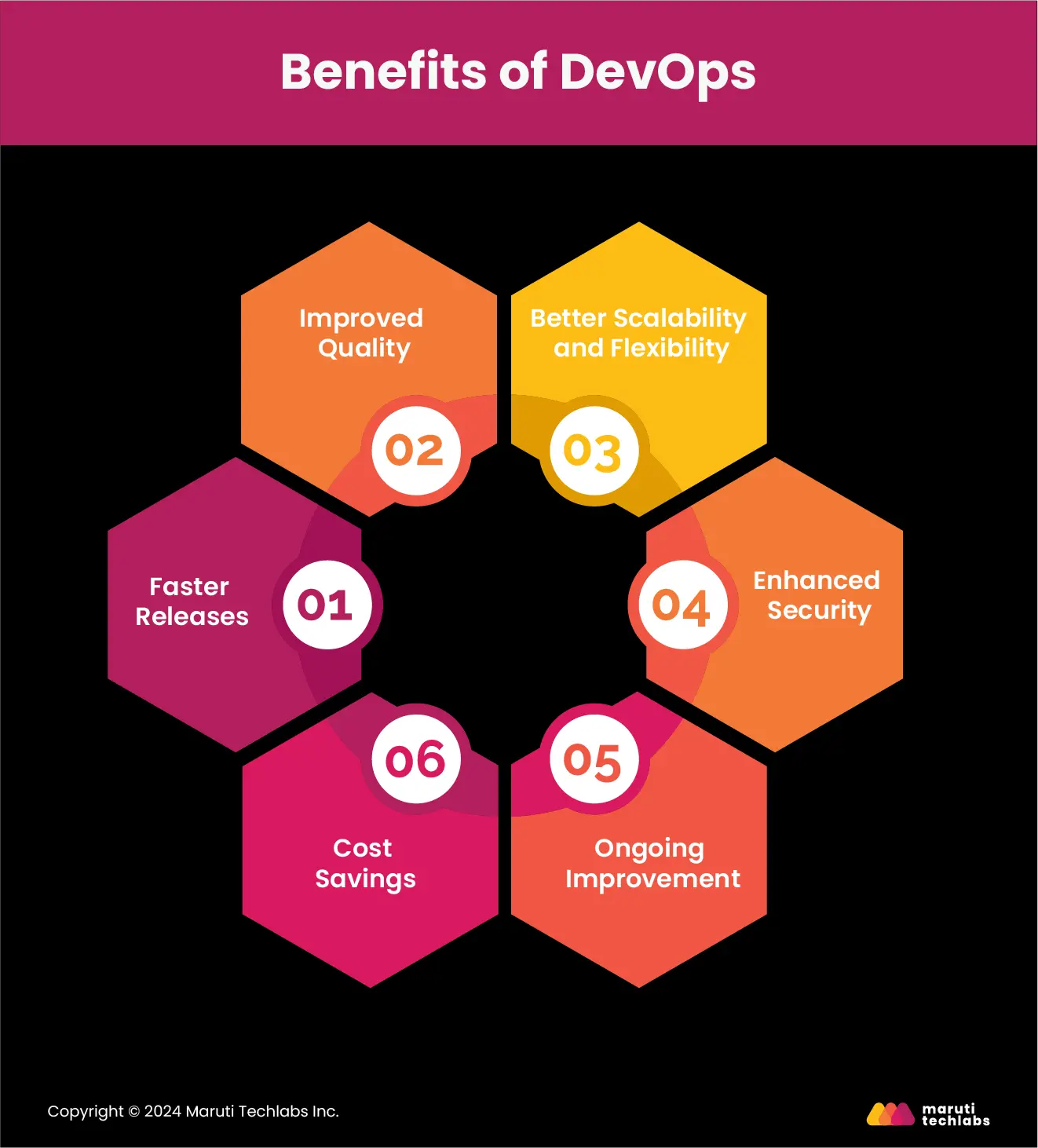
Here’s a great example of a company that used DevOps successfully: Netflix. Once a DVD rental service, Netflix became a top streaming service using DevOps ideas.
Netflix started as a DVD rental service but became a leading streaming service by adopting DevOps practices. They switched to a microservices approach, breaking their software into smaller, easier-to-manage pieces. They use various tools to automate and improve their development and deployment processes:
Netflix fosters a culture of experimentation and learning, which helps them quickly adapt to market changes and customer needs. By using these tools and encouraging teamwork, Netflix can release new features and updates faster and more reliably, making customers happier and more loyal.
To understand how CI/CD and DevOps are different and how they work together, look at the key points in the table below:
Feature | CI/CD | DevOps |
Definition | CI/CD stands for Continuous Integration and Continuous Delivery. It focuses on automating the integration, testing, and deployment of code changes. | DevOps combines development and operations to improve collaboration and streamline the entire software lifecycle.
|
Scope | CI/CD automates the build, test, and deployment stages to ensure frequent and reliable software releases. | DevOps includes CI/CD and enhances collaboration between development and operations teams.
|
Purpose | CI/CD aims to speed up and automate software updates while reducing bugs and improving quality. | DevOps seeks to bridge the gap between development and operations to enhance overall software delivery. |
Process | CI/CD involves integrating code frequently, automating tests, and deploying updates quickly. | DevOps involves automating development workflows, continuous improvement, and fostering team collaboration.
|
Implementation | Tools like Jenkins automate CI/CD pipelines for integrating and delivering code. | DevOps implementation involves adopting agile practices, cloud computing, and various automation tools.
|
Stages | CI/CD includes stages like source, build, test, and deploy, each monitored for issues. | DevOps covers additional stages like continuous development, testing, and monitoring. |
Benefits | CI/CD reduces bugs, simplifies releases, and increases deployment frequency. | DevOps improves agility, collaboration, and overall efficiency, leading to faster, higher-quality software delivery. |
Use Case | CI/CD is used by projects like ReactJS to automate builds and tests with tools like CircleCI. | Companies like Meta use DevOps to improve and automate their development processes continuously. |
CI/CD and DevOps speed up and improve software development, but they do it differently. CI/CD focuses on automating the steps of building, testing, and releasing software so that updates happen often and reliably. DevOps, however, focuses on teamwork and communication, bringing together development and operations teams to make the software delivery process smoother and more efficient. Businesses can benefit even more from these practices by leveraging CI/CD consulting to design and implement tailored automation strategies that align with their specific goals and infrastructure.
Using CI/CD and DevOps can significantly improve software development and deployment. CI/CD takes care of the main tasks in delivering software, while DevOps helps teams work together better and keep improving.
CI/CD and DevOps make software development faster and more reliable, and it is essential to use both to achieve optimal results.
For more details on how to integrate DevOps and CI/CD into your process, talk to our expert.
CI and CD mean continuous integration and continuous delivery/continuous deployment, respectively. In simple terms, CI is a modern software development practice in which code changes are made frequently and reliably.
This means developers can update code regularly, ensuring new changes integrate smoothly with the existing system. This reduces the chance of conflicts and errors and allows for faster, more efficient development processes.
DevSecOps centers on adding security practices throughout the development process, while CI/CD focuses on automating and quickly delivering software updates. Both methods aim to improve security and agility in software development. By integrating security early, DevSecOps ensures safer code, and CI/CD automation speeds up delivery, making the software development process more efficient and secure.
DevOps uses powerful tools to help teams quickly and reliably deploy and create new features for their users. These tools should automate repetitive tasks, help manage large-scale environments, and enable engineers to maintain control in the fast-paced DevOps environment.
The DevOps process includes the following steps:
In a DevOps model, development and operations teams collaborate throughout the entire software application lifecycle. This collaboration spans the initial development and testing phases through deployment and into operations, ensuring seamless integration, continuous delivery, and more efficient software application management.
Here's a breakdown of common toolchains we use in CI/CD environments:
1. Source Code Management (SCM):
2. Build Automation Tools:
3. Continuous Integration Tools:
4. Testing Tools:
5. Artifact Repositories:
6. Configuration Management and Infrastructure as Code (IaC) Tools:
7. Deployment Tools:
![406[1] (1).jpg](https://cdn.marutitech.com/small_406_1_1_935e48a5b4.jpg)

